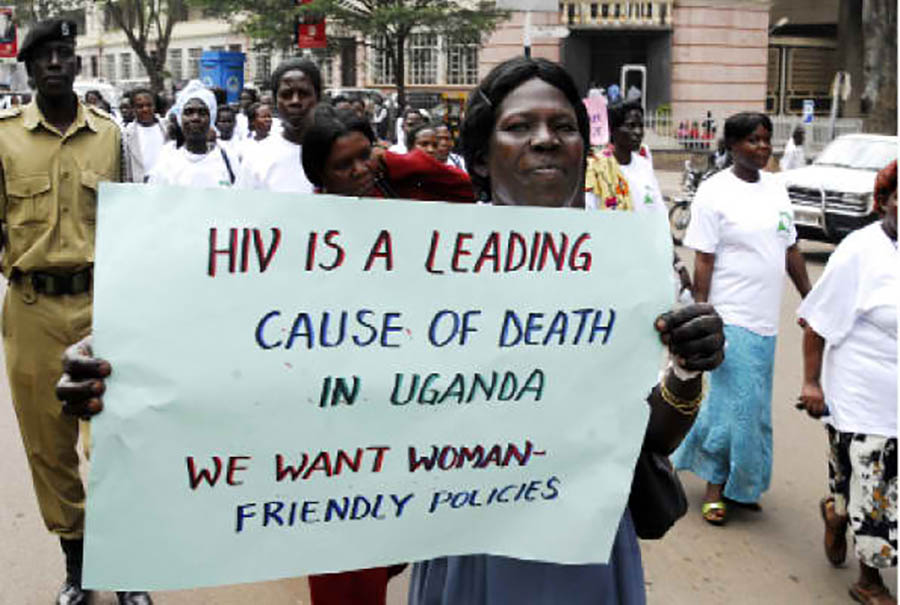
A keen eye on HIV and AIDS in light of COVID-19
Baca Juga

With the current COVID-19 pandemic before us, the majority of the nationwide undertakings are now, geared toward stemming the spread of the virus. Out rightly and understandably so, given the invisible enemies nature – of unannounced, knocking at all doors – and taking the world by storm. However, we still have a current underlying killer – HIV/AIDS. Annually over 23,000 people die as a result of HIV and 50,000 new HIV infections are recorded, in Uganda.
Research confirms that persons living with HIV and have a compromised immune system. The low CD4 count, high viral load; coupled with HIV/AIDS victims who do not take their antiretroviral treatment as prescribed – stand a greater risk of infections, including the dreaded COVID-19 virus. This is because the immune system may not be best prepared to deal with the virus. Furthermore, persons living with HIV are more culpable to respiratory infections, more than ever, when they fall short of treatment. Therefore all HIV/AIDS infections are highly susceptible to becoming death statistics from the current COVID-19 infections.
According to the World Health Organization situation report #109, approximately 259,474 lives have given way to the grim reaper, as of 9th May 2020. Uganda is fortunate enough to have no death registered so far, with 114 and 55, confirmed cases and discharged cases, respectively. The national achievement, however, should not let us tire, notably where the combat against HIV/AIDS is involved. A double burrow medical approach should be adopted to fight both HIV/AIDS and COVID-19.
Before the outbreak of the COVID-19 pandemic, Uganda had already achieved the global UNAIDS 90-90-90 targets. The 90–90–90 targets envision that, by 2020, 90% of people living with HIV will know their HIV status, 90% of people who know their HIV-positive status will be accessing treatment and 90% of people on treatment will have suppressed viral loads. In terms of all people living with HIV, reaching the 90–90–90 targets requires that 81% of all people living with HIV are on treatment and 73% of all people living with HIV are virally suppressed – UNAIDS Uganda reports.
Notable milestone, Uganda in 2018, registered a 58 percent decline in numbers of AIDS-related deaths since 2010, from 56,000 deaths to 23,000 deaths.
Despite the disruptions presented by COVID-19, there is a need for Uganda not to stutter, but instead, safeguard against the reversal of these gains and end AIDS, as a public health threat by 2030. And in turn, protect the approximately 1,400,000 people living with HIV, especially in this reign of COVID-19 pandemic.
It is important to note that according to the World Health Organization, “at present there is no evidence that the risk of infection or complications of COVID-19 is different among people living with HIV, who are clinically and immunologically stable on antiretroviral treatment when compared with the general population. Some people living with HIV may have known risk factors for COVID-19 complications, such as diabetes, hypertension, and other noncommunicable diseases and as such may have increased risk of COVID-19 unrelated to HIV.
To date, there is a case report of a person living with HIV who had COVID-19 and recovered and a small study on risk factors and antiretrovirals used among people living with HIV with COVID-19 from China. This study reported similar rates of COVID-19 disease as compared to the entire population and increased risk with older age, but not with low CD4, high viral load level, or antiretroviral regimen.”
Nonetheless, there is an urgent need to ensure that people living with HIV are supported to maintain their regular access to medication, and are also, able to utilize their networks within their communities, to access the health units for refills of ARVs. Through such action, the viral load will be kept at bay and undetectable levels.
The fight can also be reinforced by way of awareness drives such as the annual International Candlelight Memorial Day usually held in May and littered with commemorative activities that climax on May 17th, 2020.
“This is one of the oldest and largest grass-roots mobilization campaigns for HIV awareness in the World. The day started in 1983 and takes place every third Sunday in May,” Esther M. Mbayo the Minister for the Presidency said during a press conference.
“It is a day when communities stand in solidarity with those who lost their dear ones to AIDS; provide a platform for advocacy and stimulate increased individual resolve and actions to fight the epidemic,” she added.
If there is a time we needed to stand as one in the prevention and end of HIV and AIDS, it is now, more than ever.
The writer works at the Uganda Media Centre
The post A keen eye on HIV and AIDS in light of COVID-19 appeared first on Nile Post.

0 Response to "A keen eye on HIV and AIDS in light of COVID-19"
Post a Comment